iPhone from a Windows Mobile perspective - Smartphone Round Robin
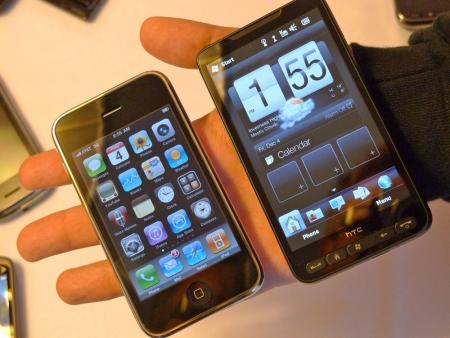
What could we possibly have to say about Apple and the iPhone that hasn't been said countless times already? Plenty. Given that Apple has spent the past year largely consolidating its power in the mobile space, and Microsoft has spent the past year making many wonder if they're going to continue in the mobile space, it's fitting that we take a look at the two here in the second week of the third annual Smartphone Round Robin.
There will be no talk of iPhone killers.
There will be no talk of the death of Windows Mobile.
OK, there may be a little. Keep reading for more.
Update: Addendum
A look at the year that was
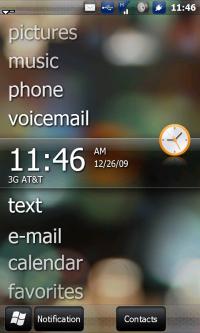
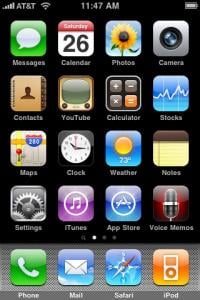
Another year, another major software update for the iPhone. Apple has settled in to a pretty predictable (if yet unofficial) schedule: Announce the next major software upgrade in the spring, unveil it in the summer along with some sort of hardware change. The iPhone 3G got a speed boost in 2009, bringing us the iPhone 3GS, along with the 3.0 (and later 3.1) software.
While a hardware boost is always welcome, it was the addition (or creation, some would say) of cut and paste that many iPhone users had so dearly done without. (That Windows Mobile users have had cut and paste for years was largely ignored by the mainstream media.) Push notifications were welcomed by some, and panned by others because of their "modal" nature, meaning they make you stop what you're doing to deal with them.
All the latest news, reviews, and guides for Windows and Xbox diehards.
Microsoft, on the other hand, announced Windows Mobile 6.5 at Mobile World Congress in February 2009. Months and months went by, during which we saw a number of leaked builds making the rounds, unofficially bringing us Windows Mobile 6.5 long before we even had an official release date. Finally, Microsoft launched WM6.5 -- along with a slew of new phones -- in October. Too little, too late, many say. But it was Microsoft's first attempt at an actual launch "event" for Windows Mobile. And while it didn't knock off any socks, it was better than the usual "OK, carriers, here it is, have fun. Update your phones if you want."
Suffice to say that nobody from "Best Week Ever" is going to come calling on Microsoft for a quote. But it was a big year not just in software, but in hardware. HTC updated its Touch Pro and Touch Diamond lines, and introduced the Snap. Samsung refreshed its Omnia line. And on a sad note, Palm killed off its Windows Mobile Treo line. A slow year, it was not.
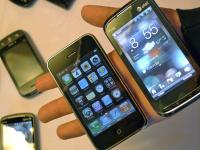

The power of consolidating power
Some of the best conversations surrounding smartphones these days have to do with Apple's singular vision. It designs the phones. It keeps a tight fist on the manufacturing process. It largely controls the marketing of the devices. Even the act of selling an iPhone is controlled by Apple. Want to use the iPhone? You have to connect to iTunes at least once. Apps? Only (official) way to get them is through Apple's App Store. Everything, at least at some point, must pass through Apple. Do not pass Go, head directly to Cupertino.
Windows Mobile, on the other hand, has always gone the opposite direction. Microsoft provides the platform, but manufacturers and carriers always have been responsible for the end product. In some ways, that's fine. Look at what HTC has done over the past two and three years, and what Palm did with its now defunct Treo line. Other times, well, let's just say we're not fans of all of the UIs tacked onto Windows Mobile.
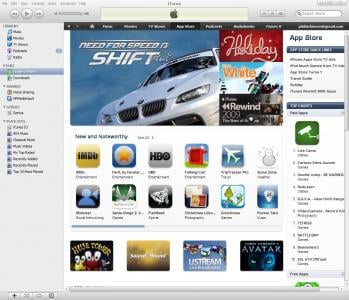
There are a number of reasons to argue for Apple's model. Certainly quality control -- for everything: design, manufacturing, marketing, support -- among the top. But for us, it's Apple's update strategy that really stands out. There are millions of iPhones out there. And there are millions of Windows Mobile phones. And when an update is released, which do you think gets the latest firmware more quickly? The iPhone, of course. Updates are pushed out through iTunes, and most normal iPhone users connect to iTunes on a fairly regularly basis. It's the hub for the whole iPhone experience. When an update is available, you're told so. And it's just a few clicks to install. The toughest part is waiting for the new software to download.
On the Windows Mobile side? First is the trouble up updating. Anyone who had a Samsung Blackjack knows just how unfun (and downright scary) Sammy's firmware upgrade process is. HTC's is pretty straightforward: Plug in your phone and run a file. But it's still full of screens that intimidate the casual user. That's Hurdle No. 1.
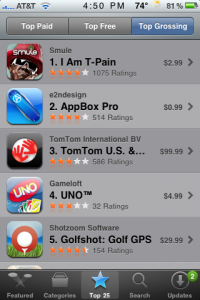
Hurdle No. 2: There's no one place Windows phones go to congregate (for lack of a better term). The closest thing we have to iTunes connectivity is Microsoft Exchange, which for the most part drives e-mail for large businesses. And while a large number of Windows phones are used by "business people," Exchange doesn't cover the entire spectrum. So, that's not necessarily the way we'd like to see updates pushed out.
Hurdle No. 3: Updates are large. Currently the iPhone and Windows Mobile do things the same way: You basically download the entire OS and reload the thing. It's much, much cleaner on the iPhone side. You update your phone, and it reloads your contacts, apps and settings -- all of your important data -- back to its previous state. When you update the ROM on a Windows phone, you start from zero. That's not a huge deal for ROM flashers, but remember that most normal people might upgrade a ROM once in their phone's lifetime.
The design obsession
When you talk about the iPhone -- and Apple in general -- the word "experience" eventually comes up. And that's what Apple really is selling. By now, every self-respecting Apple fanboy has watched the "Objectified" documentary. And even those of us who don't drink the Kool-Aid can appreciate exactly what's being done in Cupertino, Calif. You're not just buying an iPhone. You're buying into the entire Apple ecosystem and Apple's carefully constructed user experience.

The iPhone is a beautiful piece of hardware. (That's senior VP of design Jonathan Ive at right.) There's no denying that. It's sleek, it's simple, and it proved that you can have a phone without a physical keyboard. The iPhone will turn three years old in 2010, and for the most part its design hasn't changed. It's still that obelisk with a single button on its face. You could say it's getting boring. Or you could say it stands up over time. You say tomato ...
Microsoft doesn't do hardware, at least in the mobile space ... yet. We've seen what has been done with the Xbox 360 and more recently with the Zune HD. So can Microsoft do hardware? Absolutely. Certainly we don't know the intricacies of designing and building your own cell phone. But if Microsoft can do it in the entertainment space, why not the mobile space?
And speaking of unchanging design, there's the iPhone's user interface. I don't even like calling it that, though. It's a launcher. Its internal name is "Springboard." The iPhone launches apps, plays music and videos and makes phone calls. Plain and simple.
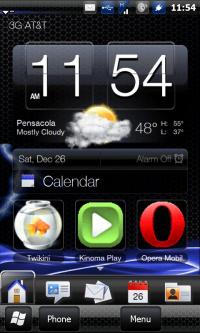
Windows phones, on the other hand, are more about bringing information to your eyeballs. Whether you're using Windows Mobile 6.5's stock today screen (called Titanium) or HTC's TouchFLO 3D or Sense UIs, or Samsung's TouchWIZ, you're presented with information. What time is it? What's the weather like? What appointments do I have coming up? Do I have any e-mails? Any text messages? Any missed calls? Ultimately more useful, and much more pleasing on the eye than a grid of icons. For a phone that's all about design and experience, the iPhone's UI is sparse, cold and boring.
And Apple's user experience also has as much to do with a lack of hardware buttons as it does software continuity. One of Windows Mobile's greatest strengths is its availability on multiple platforms. But that breaks the experience. And even within single devices, the experience can be broken. Take the HTC Touch Pro 2, for example. It has a "back" hardware button. On some applications, pushing the button takes you back a level within the app. In other apps, it exits the application. (Well, there was a "back" soft key. But still. WTF?) That's just not good user experience. And it really is just the tip of the iceberg.
Apps, apps and more apps
Oh, but what is a phone without applications? And the iPhone invented applications, right? Not so much. Sure, Apple loves to boast about how many apps are in the App Store. But we've debunked that as marketing B.S. already. Windows Mobile has had tens of thousands of applications available for years. Nothing new there. Problems is they've been spread out to hell and back. While repositories have existed in the likes of Handango and Mobihand (which runs our own WMExperts Software Store), there weren't any on-device homes for purchasing and loading applications. That's changed with Windows Mobile 6.5 and the Windows Marketplace for Mobile. While it's functional, it's not nearly as sexy as Apple's App Store. (Hell, even the Windows Marketplace for Mobile name is clunky.)
No, what the App Store did was to bring the idea of applications to the consumer space, and made them easy to find (though not necessarily to sort through), purchase and download. Apps are a necessity. Not that they weren't before. Windows Mobile had 'em. Palm OS had 'em. Symbian's had 'em. BlackBerry's had 'em. Sure, your phone's nice, but what apps does it have? Is the iPhone so successful because of the App Store? Or is the App Store so successful because of the iPhone? It's a fun discussion, but moot at this point.

What isn't moot is the overall quality of apps. Sure, there are crap apps on the iPhone, just as there are for Windows Mobile and any other platform. But where the iPhone has really shined is with its continuity of the design of apps, especially the basic ones. While developers are free to make their apps look however they please, it's the basic apps that often stand out. Using Apple's Cocoa Touch framework, selection menus are presented in a consistent manner. They're easy on the eyes (and the fingers). You know what buttons are going to do, because they do the same things throughout applications.
The one longstanding Achilles' heel? That sheer number of apps. The market's flooded, and the process of getting into the App Store is fraught with secrecy and frustration. Some apps are rejected for what appears to be no reason whatsoever. Others are accepted without question, then later pulled when cooler heads decided that maybe a baby-shaking app was in poor taste.
What's in store for 2010
We don't believe in iPhone killers. That's a phrase that was coined by writers who couldn't think of any other arguments to make. No, we're not looking for Windows Mobile 7, if and when it's announced and later released, to "kill" anything, save for maybe the bad taste that Windows Mobile 6.5 left in a lot of mouths. But even that isn't entirely fair. Microsoft announced Windows Mobile 6.5 and for the most part delivered exactly what it promised. No more, no less. A stopgap to hold things over until WM7.
Will that be the long-desired Zune phone? Will it be a more compelling version of Windows Mobile as we know it? That's hard to say at this point. We just don't know.
And Apple's even harder to figure out. The general consensus is that a major iPhone hardware revision is coming in the summer of 2010. High-definition? Some sort of super processor? A keyboard? (Gasp!) Who knows ... And throw the mythical iTablet/iSlate/iWhatEverIt'sCalled into the mix, and the rumor mill will continue to run rampant for some time now. We wouldn't bet the farm against a fairly major UI overhaul, either.
But, no. Nobody will be "killing" the iPhone anytime soon. And, contrary to popular belief, another platform won't be "killing" Windows Mobile anytime soon. Only thing that could "kill" Windows Mobile is Microsoft, by pulling the plug. Our guess is that Windows Mobile 7 will look to make the leap from the enterprise space (businesses) to more of a consumer space. And if it leverages the quality of the Zune HD with the popularity of the Xbox 360, it could well find itself with a hit on its hands.

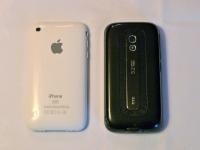
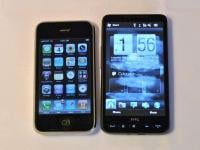


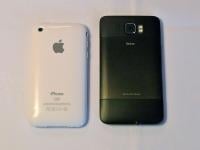
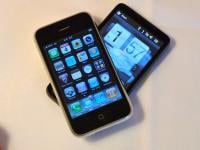

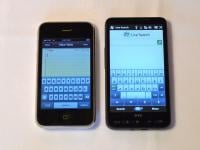
Addendum: Jailbreaking and cooked ROMs
We haven't mentioned jailbreaking on the iPhone or ROM cooking on some Windows Mobile devices. That's partially to save your eyeballs (thanks for reading as much as you did), and partially because those are unofficial, unsupported and legally ambiguous methods of using your phone. That said, they are also very important parts of both communities. But chances are if you're reading this in the first place, you're fully aware that you can jailbreak your iPhone, and that many Windows phones (though mostly HTC devices) can have custom ROMs loaded onto them. Have at it. Have fun. And don't say we didn't warn you.

Phil is the father of two beautiful girls and is the Dad behind Modern Dad. Before that he spent seven years at the helm of Android Central. Before that he spent a decade in a newsroom of a two-time Pulitzer Prize-finalist newspaper. Before that — well, we don't talk much about those days. Subscribe to the Modern Dad newsletter!
